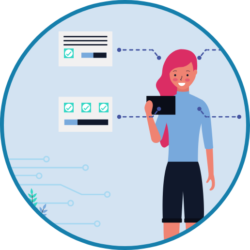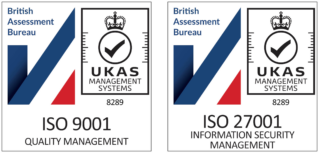7 Practical Tips to Reduce Bias in Recruitment

No company wants to think that they aren’t fostering diversity in their workforce. But bias — whether you know it’s there or not — could be getting in the way of your diversity efforts.
In order to create a truly diverse workforce, you must create a recruitment process that embraces diversity on every level.
So how do you start building a hiring process focused on diversity?
- Expand Talent Pool with AI Sourcing
If you’re not drawing from diverse sources, you won’t pull diverse candidates.
Intelligent solutions can help you search job boards and other online platforms to find the perfect match for the job position, using factors like skills, predicted performance, and corporate fit.
- Refine Wording of Job Descriptions
The wording of your job description may be more important than you think- biases can creep into everyday language.
Research shows that “masculine-coded” words can discourage women from applying and that using excessive business jargon can also deter applicants from underprivileged backgrounds.
When writing job descriptions, use gender-neutral terms, keep the job requirements straightforward, and highlight your brand’s commitment to diversity. Certain software programs can flag gendered terms, helping you attract a diverse candidate pool.
- Automate Screening Process
When we leave candidate screening up to manual human labor, it’s easy for biases to trickle in. Demographic characteristics like name, gender, or address are all factors that can lead to unconscious bias.
Software algorithms allow you to cut through these biases, building a fair assessment of each candidate based on qualifications, attributes, and experience.
- Skills-Based Assessments
Many aspects of the application process are subject to bias, from cover letters to interviews. However, a skills-based test offers a chance to compare candidates in a clear and objective way.
- Standardize Interviews
Unstructured interviews may lead managers to make decisions based on first impressions, rather than an unbiased look at the candidate’s capabilities. Stick to a series of defined questions and assess all your candidates against the same benchmarks.
- Data-Driven Hiring
Instead of letting emotion or gut feelings drive your decisions, let the intelligent data insights guide you.
AI solutions can draw upon all the information you’ve collected to make an unbiased candidate evaluation.
- Optimize Strategy
The work isn’t over once you’ve found the right fit, extended an offer, and welcomed your ideal candidate into the workplace. By tracking the right metrics, creating regular reports, and setting a diversity recruiting benchmark, you can continue to improve your strategy year after year.
Putting Diversity First
A more diverse workforce can improve your company’s productivity and even boost your bottom line.
To overcome unconscious biases, you need to equip your team with the tools they need to make diversity a priority in every stage of the hiring process.
If you need a diversity recruitment solution for your workplace, Oleeo is here to help. Track the success of your diversity efforts, build comprehensive reports on your recruitment process, and use AI-powered software tools to make every part of your hiring funnel more equitable.
Book a demonstration with Oleeo here.
This Blog was provided to us by one of our partners, Oleeo.
Interested in finding out more? Click the link to their website here, or request a demo here.
Sign up to receive updates
Receive notifications from TrustID direct to your inbox. Simply fill out your email address in the form below.
Want to find out more?
We’d be really happy to chat through your requirements and offer advice on the best service for your business.
Tel: 0118 466 0822 or email us.
Request a callback

